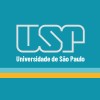
Incidence and Risk Factors for Surgical Site Infection After Intramedullary Nailing of Femoral and...
Fracture FixationIntramedullary1 moreDiaphyseal femoral and tibial fractures are in the spotlight within the traumatology-orthopedics scenario. Intramedullary nailing (IMN) remains the method of choice for treating these fractures, both open and closed ones. Occurrences of surgical site infection (SSI) related to this type of osteosynthesis are a challenge for all the professionals involved in patient healthcare. The reported incidence of SSI after IMN ranges from 0.9 to 17.5%. The majority of the data comes from retrospective studies and as part of case series descriptions, with little detail about the criteria used for defining and searching for cases of infection. Regarding the potential risk factors for this complication, previous use of external fixators, occurrence of open fractures and the severity of exposure according to the Gustilo-Anderson classification were indicated in a few retrospective studies as being possibly related to this complication. The objectives of the present observational cohort study are: 1. To determine the incidence of SSI related to IMN for fixation of diaphyseal femoral and tibial fractures in patients treated in a university traumatology and orthopedics reference hospital in São Paulo, Brazil; 2. To evaluate the risk factors related to the occurrence of this type of infection.

Advanced Understanding of Staphylococcus Aureus Infections in Europe - Surgical Site Infections...
Staphylococcus AureusSurgical Wound InfectionASPIRE-SSI is a prospective, observational, multicentre cohort study among adult surgical patients, which aims to determine the incidence of healthcare-associated S. aureus infections, particularly S. aureus surgical site infections (SSIs), across Europe and to assess the most important risk factors for this type of infection.

48 Hours After Surgery Shower Patient's Wound Infection Rate, Pain Score, Patient Satisfaction and...
Surgical Wound InfectionBackground and Purpose:The level of the surgical wound healing of the epidermis takes 6-12 hours, and the peak period of 48 hours to achieve healing.The traditional postoperative wound care was every 1-3 days clean with saline and gauze or other dressing and not opened .In traditional concept the wound touch the water that will increase the rate of wound infection.England Department of Health in 2008 surgical wound care guidelines about surgery wound cleaning solution comparison. It was no significant difference in wound infection.with normalsaline and tap water. 2012 The Cochrane Collaboration: Water for wound cleansing systematic review of the literature that wound clean water has no effect on the rate of wound infection and healing rate, conducive to personal hygiene and cost-effective. Under high temperature and humid environments in our country, after surgery not bathe often affect patients' satisfaction and increase the cost of dressing and manpower, Was opened a line after surgery the wound can be shower? It is important about surgical wound care guidelines, but also the patient daily asked a high degree of issues. Purpose of this study (1) post-operative 48 hours, shower or not wound infection rate (2) post-operative 48 hours, shower or not the pain score (3) post-operative 48 hours, shower or not the comfortable (4) post-operative 48 hours, shower or not the care costs.

Negative Pressure Wound Therapy for the Prevention of Surgical Site Infection Following Lower Limb...
Surgical Wound InfectionPeripheral Vascular DiseasesThe purpose of this study is to investigate the current standard of wound care following vascular operations compared to to a negative pressure wound therapy (vacuum dressing) and the rate of surgical site infections (SSIs) in patients undergoing surgery to restore blood flow to the lower limb(s). Negative pressure wound therapy consists of a closed, sealed system that produces negative pressure (vacuum) to the wound surface. The device itself consists of open-cell foam that is sealed with an occlusive adhesive dressing (covers and sticks to the incision) and suction is maintained by connecting suction tubes to a vacuum pump and waste collector. The investigators objectives are to determine whether there will be any reduction in surgical site infection and this potential reduction will influence length of hospital stay, emergency room visits, antibiotic use and need for re-operation.

Immunonutrition and Carbohydrate Loading Strategies in Breast Reconstruction
Wound ComplicationWound Heal5 moreThis study is designed to test the following hypothesis: patients undergoing immediate alloplastic and autologous breast reconstruction following mastectomy that receive preoperative immunonutrition will experience a reduction in wound complications in the 30-day postoperative period compared to a standard of care control group (retrospective chart review) of 264 (132 alloplastic + 132 autologous) consecutive breast reconstruction patients prior to 5/25/2018.

CiNPT for Abdominoplasties in Post-bariatric Patients Study
ObesityMorbid25 moreThe overarching goal of this research is to assess whether the post-operative use of closed-incision Negative Pressure Therapy (ciNPT) accelerates healing of surgical wounds, improves surgical outcomes, and reduces the rate of local complications in high-risk, obese, post-bariatric patients undergoing abdominal body-contouring procedures (abdominal panniculectomy or "abdominoplasty") compared to standard wound care. The investigators postulate that ciNPT can cost-effectively improve outcomes and standard of post-surgical care in this specific category of patients. This hypothesis will be tested through a prospective, interventional, case-control, randomized clinical trial.

Early Healing of Oral Soft Tissues: a Clinical and Biomolecular Analysis. Part I
Wound SurgicalWound Heal1 moreThe purpose of the present study is to observe and compare -through a biomolecular analysis- the differences in the gene expression and cellular behavior in the early wound healing process -24 hours after injury- between the following three oral tissues: alveolar mucosa, buccal gingiva and palatal tissue. The main hypothesis is that there is a difference in the gene expression and in the cellular behaviour between the three oral tissues studied and this difference can be observed at 24 hours post-injury.

Comparison of Postoperative Outcome of Hepatectomy for Living Donors According to Three Different...
Healthy Donors for Liver TransplantationLiving donor liver transplantation (LDLT) is an important option for patients with end-stage liver disease requiring liver transplantation. When performing LDLT, the safety and well being of donors is of the utmost importance. The conventional incision for donor hepatectomy is a right subcostal incision with a midline extension up to xiphoid. Minimally invasive liver surgery throughout a single 10 cm upper midline incision without laparoscopic assistance has been widely applied and considered to be safe and effective. Recently, laparoscopic and minimally invasive living donor hepatectomy via transverse incision has been suggested to reduce morbidity and the invasiveness of living donor hepatectomy. Although minimally invasive approach has become the surgical method of choice for many transplant centers, little data on comparing the impact of all three different type incision in living liver donors. In our center, the investigators have adopted three different incision according to surgical teams. The investigators undertook this study with the aims of comparing the pain and quality of life of donors according to type of three different incisions and assessing any benefits to the donor due to the smaller midline incision during the early postoperative period.

Botox in the Healing of Surgical Wounds of the Neck
ScarThe investigators hypothesize that Botox A will reduce scarring and improve healing of surgical neck wounds.

Surgical Site Infection Rate After Intra-Abdominal Surgery Using Negative Pressure Wound Therapy...
Surgical Wound InfectionWound; Abdomen2 moreThe goal of this study is to present a large single-institution experience reporting surgical site infection rates in patients who have undergone intra-abdominal surgery followed by wound closure with Negative Pressure Wound Therapy. A retrospective review of patients' charts will be conducted to analyze surgical site infection rates between wound closure with and without Negative Pressure Wound Therapy (NPWT). American College of Surgeons National Quality Improvement Program data from previous standard of care (primary closure after colorectal surgery) will be used for comparison with newly adopted standard of care treatment regimen (wound closure with NPWT). Data on patients who underwent intra-abdominal surgery will be retrospectively collected and a database will be created. These individuals will be identified through medical records and recontacted by mail and/or phone to collect study data. Finally, patients newly referred to the Principal Investigator for intra-abdominal surgery will be enrolled in the database. After giving informed consent, data on surgical site infection rates and outcomes will be collected. Longitudinal outcomes will be assessed at 30 days, 6 months, and 12 months post-operatively. These patients' outcomes will be compared to a group of patients treated by the Principal Investigator who also underwent intra-abdominal surgery without Negative Pressure Wound Therapy. We hypothesize that fewer patients treated with negative pressure wound therapy following intra-abdominal surgery will develop surgical site infections than patients who had intra-abdominal surgery but were not treated with Negative Pressure Wound Therapy.
